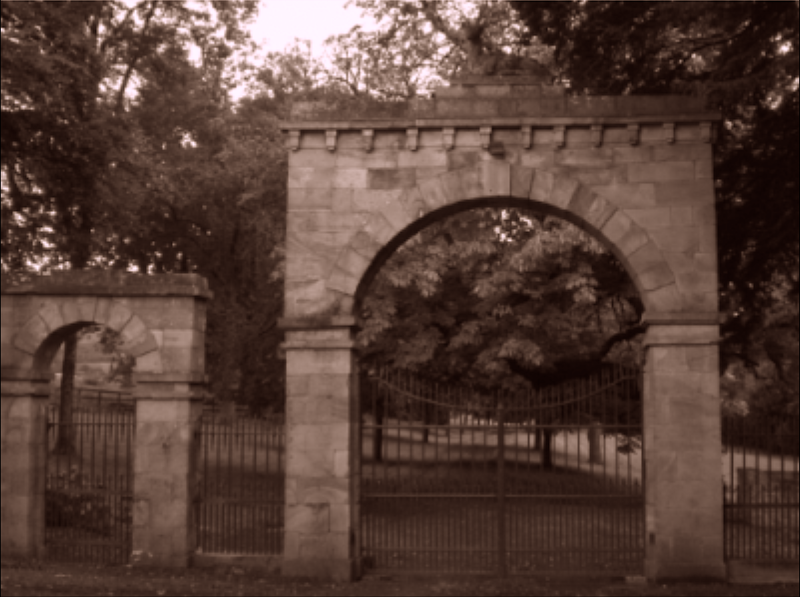DOLLA/KILBOY - (An Doladh)(Dollow)

Dolla Garda station.

Ryan Lacken's Bar & Grocery, Dolla



Record of some of the lands redistributed under the Act of Settlement from their former owners to Henry Prittie and others (1674 - 1703) - (virtualtreasury.ie)

The parish of Dollow (Dolla) from the Down Survey maps by William Petty between 1655-56. Surprisingly accurate, Petty wasn't a surveyor and neither were the men involved in carrying out the work. They were the now unemployed soldiery. Petty created some simple tools for the untrained soldiers to use. They measured distances with a chain and transferred all their findings onto grid paper which proved detailed and precise.
The Prittie family
The original Henry Prittie was a Captain in the Kentish Regiment of Horse and later a major in Cromwell's New Model Army. The Prittie family were confirmed as owners of 3642 acres of lands in Owney and Arra, and Upper Ormond under the Act of Settlement of 1667, and by letters patent in 1678 under Charles II. These lands had historically belonged to the indigenous Gleeson, O'Kennedy, O'Brien and O'Meara families. The ordinary common soldier in Cromwells army was also allocated confiscated land. However, many lacked the funds to develop such lands. This, homesickness and being strangers in a foreign land saw them look for an alternative. Though prohibited the practice of selling these lands to the likes of Henry Prittie for less than its worth meant that Prittie increased his acreage.This land grab would later increase to 21,081 acres making the family the third largest landowners in Tipperary. Apart from Kilboy House, the family owned other residences at Springfield in Clonmel, Corville at Roscrea, Northland, Deerpark, Cloughjordan House and Tenessee at Modreeny, Borrisokane

Henry Prittie grant of Lands under the Act of Settlement.

Sydney Morning Herald - 04/03/1876

Dublin Gazette - 04/10/1755
Prittie's daughter marries into the Bunbury family

Dublin Gazette - 07/03/1761 - Prittie for M.P.

Dublin Gazette 26/02/1765
Peter Holmes, M.P. for Banagher marries into the family. Its worth noting that Henry Prittie was M.P. for Banagher between 1767 and 1768. Peter St in Nenagh was named for Peter Holmes in 1839

Dublin Gazette- 01/10/1768
- This records the birth of a son. However there is no mention of him in Burkes Peerage

Dublin Gazette- 02/12/1769
Prittie elected M.P. for Gowran

Henry Prittie elected M.P. for Banagher 06/11/1767
(List of returned Members for Banagher - National Archives, Ireland)

NOT SELLING ENOUGH BEER
The Irish Times - 09/08/1926

The Hon Henry Prittie in the Dock - Nenagh Petty Sessions 02/05/1885 where he is summonsed for having an unlicensed dog. Fined a penny & costs plus a dog licence.

Colonel Henry Prittie of Dunalley Castle
He gained the rank of Major in 1649 in Cromwell's New Regiment of Horse. He was High Sheriff of County Carlow in 1650, Governor of Carlow in 1652, and High Sheriff of County Tipperary in 1659. Burkes Peerage states that in 1690 Henry Prittie's only son, also Henry Prittie, was thrown from the battlements of Dunalley Castle following a siege of 28 days by disaffected soldiers of James II after the Battle of the Boyne. Miraculously he survived unhurt. Dunalley Castle was situated where the Magcobar mineworks later were to be found.

Henry Prittie - 3rd Baron Dunalley
(07/01/1807 - 10/09/1885)
- nephew of Henry Sadlier Prittie and subject of the above article in the Sydney Morning Herald

Henry Cornelius O'Callaghan - 5th Baron Dunalley with family.
His seated son is Terence Cornelius Farmer Prittie who was a P.O.W. captured at Calais and persistant escapee during WW2. Later awarded an M.B.E and a famed journalist on the German desk with the Manchester Guardian.

Terence Prittie recounts his escape attempts

Terence & Desmond Prittie at 9 & 22 months

Henry Prittie, 1st Lord Dunalley - (03/10/1743 - 03/01/1801)
He was M.P. for Banagher between 1767 and 1768, for Gowran between 1769 and 1776 and M.P. for County Tipperary between 1776 and 1790. He also held the office of High Sheriff of County Tipperary in 1770. He was elevated to Baron Dunalley in 1800. He married Catherine Sadlier, co-heir of Sopwell Hall

Henry O'Callaghan Prittie - 4th Baron Dunalley (21/03/1851 - 05/08/1927)
Born in Dawson St in Dublin, Honorary Colonel in the 3rd Battalion, Royal Irish Regiment - He was also the last Lord - Lieutenant of Tipperary from 1905 until 1922. He rebuilt Kilboy after the fire.
(Photo taken 02/12/1915)


Lady Dunalley - 1915 - (N.L.I.)

Terence & Desmond looking very much the young country squires with shotguns, plusfours and gundog on the steps of Kilboy

Henry Sadlier Prittie - 2nd Baron Dunalley - (03/03/1775 - 10/10/1854)
He was married twice but died childless. The title reverted to his nephew, also called Henry Prittie. His second wife, Emily Maude reinforced the connection with Cornwallis Maude, 1st Viscount Hawarden and cause of the Nenagh Milita Mutiny. He represented Carlow between 1798 & 1801. In 1819 he entered the House of Commons as M.P. for Okehampton which lasted until 1824. He became an Irish Representative Peer in the House of Lords in 1828.

Autograph clipping of the 2nd Baron
(on sale on an Auction site)

Henry Cornelius O'Callaghan Prittie D.S.O. (19/07/1877 - 03/05/1948)
- 5th Baron Dunalley

5th Baron Dunalley as author
He fought in both the Boer War and WW1 where he gained the rank of Major in the Rifle Brigade. He was wounded and mentioned in despatches and awarded the D.S.O.

The coming of age of Hon. Henry Desmond Graham Prittie in 1933.
Photo taken on the steps of the rebuilt Kilboy House
Kilboy Estate

"In Omnia Paratus"
Coat of Arms of 1st Baron Dunalley

Kilboy Estate marked on the Road to Limerick on the Taylor & Skinner series 1777

How Lord Dunalley got his land - (Duchas.ie)
- I love the way he is referred to as "Paddy Pretty" and "Lord de Nally"

The Stag / Buck Gate - entrance to Kilboy on the Nenagh Dolla Road
The many sides of Kilboy House
Kilboy House was built to a design by architect William Leeson in 1771 by Henry Prittie, created 1st Baron Dunalley in 1800.


1939 photo of the rebuild after the fire of 1922 and missing the top storey



1955 version of a demolished and rebuilt Kilboy. The steps and cellars are all that remain of the original building

Architects vision

A gem of Palladian Architecture returned to its former glory

Kilboy looking resplendent in the sun

Kilboy House glass domed ceiling flooding the staircase with light

Kilboy House interior with a beautiful plaster stuccoed ceiling


Kilboy House Staircase bathed in light
Kilboy House restored by specialist Classical Architects Quinlan-Terry
Entertaining at Kilboy

Lord Dunalley, Lady Clementine Maude and friends at a house gathering at Kilboy - (NLI)

On the steps of Kilboy House - 24/09/1901 - (NLI)

Lord Dunalley & the Prittie family and guests 25/09/1901

A snapshot of life at Kilboy House on the 1901 census. Notice how many servants and family members
The Burning of Kilboy


Derby Telegraph - 03/08/1922 -
Burning of Kilboy House

Daily Herald - 04/08/1922

Irish Times - 07/05/1924 - Kilboy House Claim

Belfast Newsletter - 21/07/1924 -
Kilboy Compensation

Midland Advertiser 22/05/1924 -
Conscience & Guilt -

The Builder - 06/12/1925

Irish Times - 26/08/1929
Kilboy House was raided and looted on at least thirteen occasions during the War of Independence before it was finally destroyed by fire on 04/08/1922 during the Civil War. The arsonists returned to the smouldering ruins the following night and this time burned the stables and outhouses. Two Piano's which had been dragged into the courtyard on the night of the first fire were added to the conflagration on the second night. Destruction was to be complete. In a letter to Lord Dunalley from his solicitor Howard Dudley, pre-empting the arson, the plea is made...
"arrange for some vans to have the furniture removed from Kilboy House and stored in Dublin for I am greatly afraid the house will be burned or destroyed"
- - - - - - -
The houses of the Guardsman, Yardsman and Herdsmen were also targeted and destroyed with the workers and servants being given three days to pack up and leave beforehand. According to Dunalley's steward Samuel Doupe, General Michael Collins on his tour of the South, called into Nenagh Barracks and berated the Brigade commander for the state of affairs in allowing the wanton destruction in the North Tipperary area. The letters from Doupe to his master show a man frustrated at every turn in trying to protect the Estate. He had to move to Nenagh out of fear for his own safety and turns up at Kilboy each morning, negotiating the fallen trees and entrenched roads on the road from Nenagh, not knowing what new calamity has befallen the Estate.
- - - - - - -
Following the destruction of the house, Dunalley received compensation of £22,330 under the Compensation Act of 1923, after peace was restored. It's interesting to note that the house and estate were insured for £25,550. Dunalley's solicitor wrote.....
"We were unable to prove that the things were taken by the Irregulars and as a matter of fact I believe ....the whole place was plundered principally by the mountainy people after the burning....."
- - - - - - -
The house was rebuilt minus the top storey. In 1955, this structure was demolished and a single story Georgian style residence was built over the existing basement. In more recent times, after suffering another fire the house was rebuilt and has been tastefully and sympathetically reconstructed into a facsimile of the original Leeson designed house. Before reconstruction began, this cost the new owners €60,964 in fee's to the local council as a contribution to providing public infrastructure such as roads and water.
- - - - - - -
Kilboy House for sale

Country Life - 22/10/1948

Country Life - 03/06/1949

Country Life - 17/02/1950

Kilboy House up for sale as the Prittie family leave
Kilboy Church & Graveyard


Old photo of Kilboy Church

Kilboy church and graveyard after tidying up

Gateway to Kilboy graveyard

Church windows

Kilboy Church

Zoomorphic handle on the gate

Stone plaque at entrance to graveyard


Aerial views of Kilboy Church 07/10/1969
Neighbours

The ivy clad remains of the home of the Going family - Traverston House in 1952. This was also designed by architect William Leeson

Mountisland House - one of the Brindley family homes


The verdant fields of the Dolla countryside


Create Your Own Website With Webador